Companion plants for turnips have many benefits. Even if you don’t normally grow turnips, you may want to consider adding them as they have many benefits for other plants!
Turnips have a somewhat unique characteristic of acting as a trap crop. Many insects love turnips and will eat them instead of other garden plants. Having them in and around your garden will help protect your more valuable crops!
Of course, if you are eating the turnips you will want to plant other companion plants with them to deter insects from eating them.
Turnips are part of the brassica family, including broccoli, cabbage, kale, collard greens, kohlrabi, cauliflower, and Brussels sprouts. In many cases, companion plants that are friendly to turnips will be friendly toward these as well.
Table of Contents
Your Goals Will Determine Your Turnip Companion Plants
Is your goal to grow an abundant crop of turnips? Then you will choose things to protect them and repel insects.
If your goal, however, is to grow another member of the brassica family, then you will want to use turnips to trap insects away from these. The turnips may not be edible, but your other crop will have less pests.
As you look over the list of choices, pick the ones that best meet the goals for your garden!
26 Companion Plants for Turnips
1. Beans
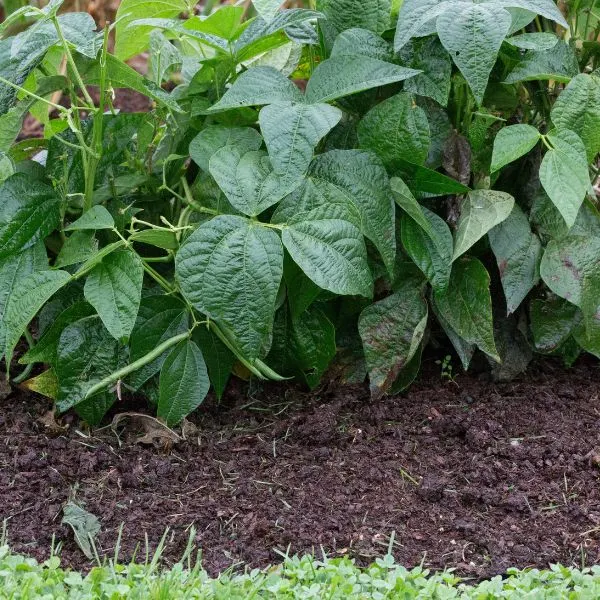
Benefits: Beans are nitrogen-fixing.
Bush beans are excellent companion plants for turnips because they add a natural fertilizer to the soil. Turnips require a lot of nitrogen and when beans are planted nearby it boosts this nutrient in the soil.
Just like turnips, beans can be grown a couple of times during the season. Turnips and beans can be rotated so that turnips benefit from the extra fertilizer. Another option is to plant beans on trellises and plant turnips at the base.
2. Broccoli
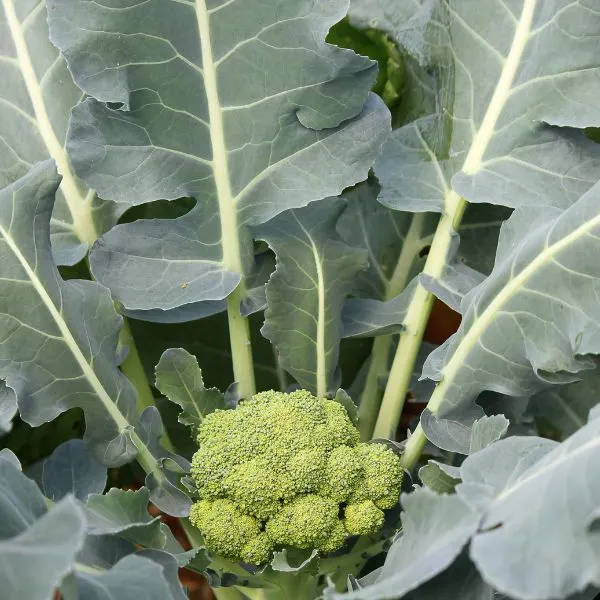
Benefits: Turnips act as a trap crop.
There are many insects that love broccoli. Most of them eat turnips too! In fact, they prefer turnips to broccoli. If you plant turnips near broccoli, they will probably eat your turnips but leave your broccoli alone!
Of course, it is best to plant other companion plants too that repel insects like cabbage butterflies, cabbage worms, and aphids from your broccoli as well.
3. Brussels Sprouts
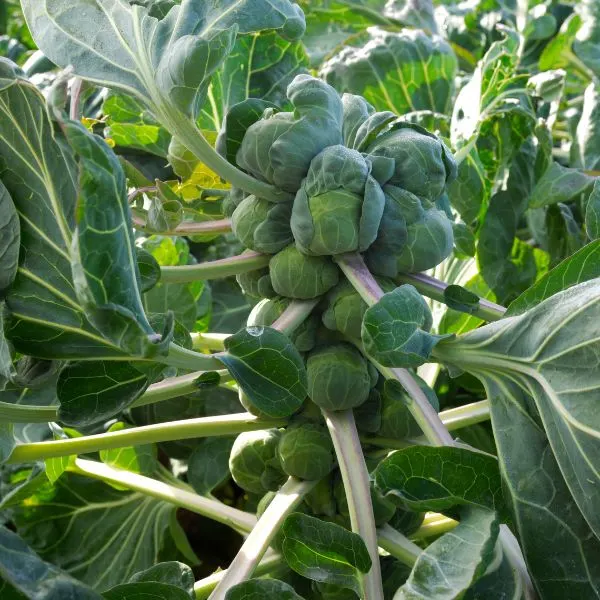
Benefits: Turnips attract pests that eat Brussels sprouts.
Like many plants in the brassica family, Brussels sprouts are prone to infestation by a variety of insects. Turnips act as a trap crop when planted nearby to attract damaging insects. Brussels sprouts should be planted with other companion plants to help repel the insects as well.
4. Cauliflower

Benefits: Turnips act as a trap crop.
Cauliflower has many pests that love to eat it or its leaves. Among them are aphids, cabbage worms, cabbage butterflies, flea beetles, slugs, and whiteflies. All of these prefer to eat turnips.
Planting turnips near your cauliflower can draw the insects away from the cauliflower. Of course, over-planting can also attract more insects. The key is to manage your trap crop and the insects during the growing season.
5. Celery
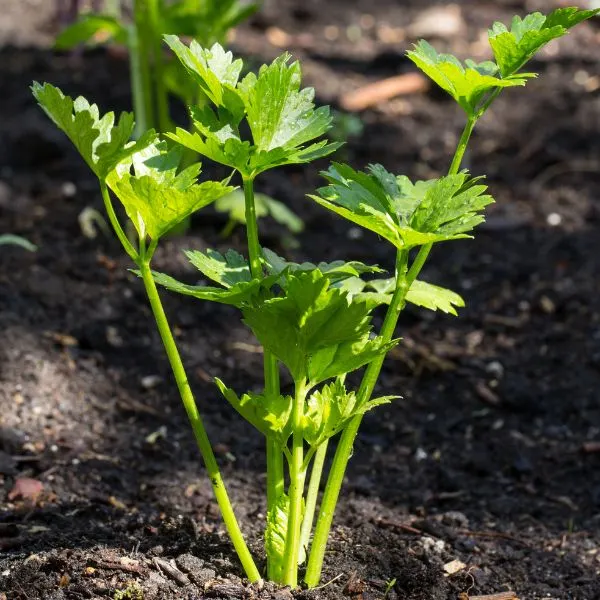
Benefits: Celery deters cabbage moths away from turnips. Turnips may act as a trap crop.
Celery and turnips offer each other mutual benefits. They each deter different insects. Celery could be planted near all of the brassica plants to repel cabbage moths and worms.
On the other hand, if celery is the crop you really want, turnips may act as a trap crop for aphids that would normally damage the celery.
Choosing whether turnips are a crop or pest management may affect your planting strategy. On the other hand, if you add strong-smelling vegetables and herbs like onions, garlic, and chives, it may repel insects from both!
6. Chamomile
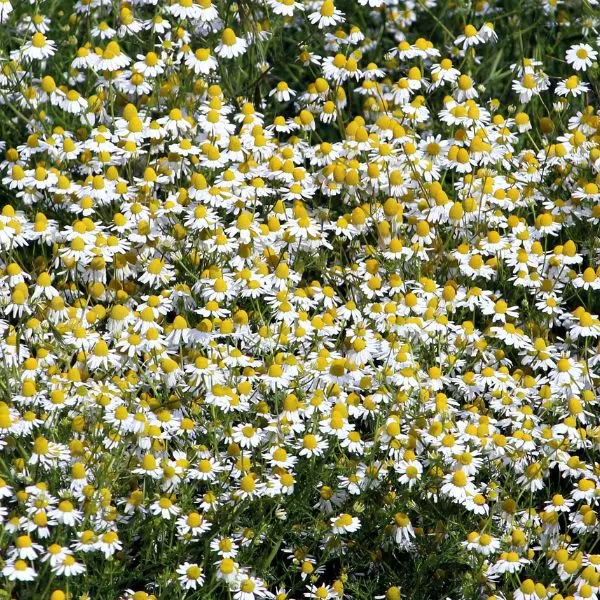
Benefits: Chamomile attracts beneficial predator insects and repels pests.
Chamomile offers a double benefit to turnips. First, its beautiful flowers attract ladybugs, hoverflies, and parasitic wasps. These prey on turnip pests.
In addition, chamomile actually fights fungal disease and repels whiteflies that like to lay their eggs on turnips and whose larvae will damage the turnips.
7. Clover

Benefits: Clover reduces aphid and cabbageworm populations.
Clover planted near your turnips may interfere with the reproduction of pests and increase the number of predator ground beetles. This results in a reduced population of cabbage aphids and cabbage worms.
8. Chives
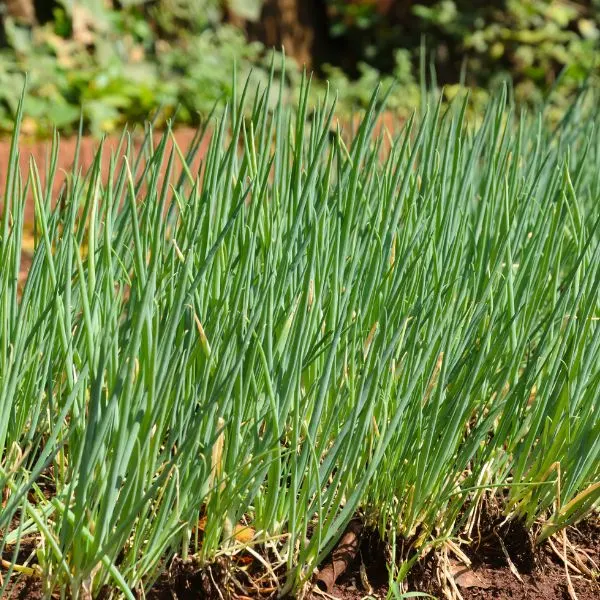
Benefits: Chives repel pests that eat turnips.
Besides being a delicious ingredient in many savory dishes, chives can be a versatile addition to the garden.
The flowers attract bees which are essential for productive turnips. Turnips grown without bees produce ⅓ as many turnips! In addition, chives repel many damaging insects from the turnips.
Additionally, chives can benefit turnips by blocking weeds from spreading through the garden and acting as natural mulch. This approach does need to be used carefully as chives can spread quickly and become difficult to manage.
9. Cucumber
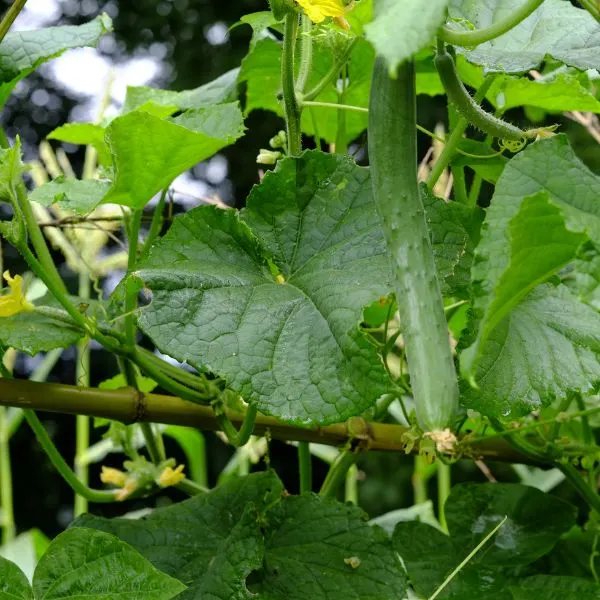
Benefits: Cucumbers share space well with root vegetables.
Cucumbers grow primarily above ground and have only one main tap root per plant. That means they pair very well with root vegetables which use far more of the soil to be productive.
As a bonus, cucumbers act as a bit of a ground cover if left on the ground. Trellising them near the turnips will allow for more companion plants that repel insects from both.
10. Dill
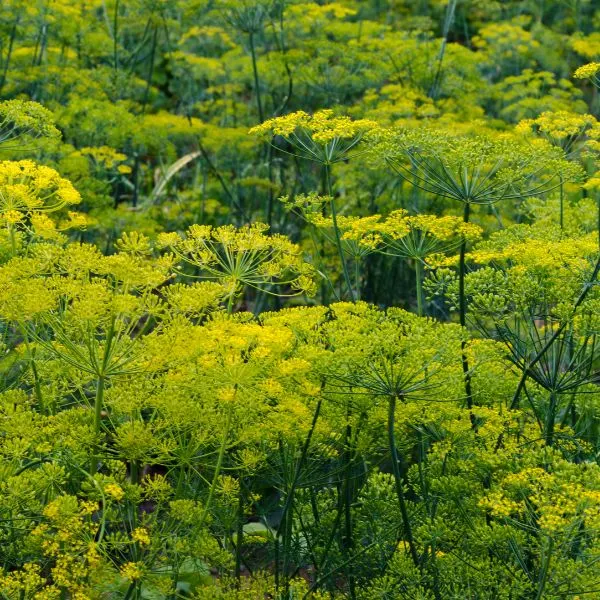
Benefits: Dill Repels cabbage moths and cabbage worms.
Dill, like many other herbs, makes a great companion plant. If you are planting turnips as a crop you want to harvest and not as a trap crop, then planting dill as a companion is a good idea. Cabbage moths and worms both love turnips and dill will help repel them.
In addition, dill attracts beneficial predator insects like hoverflies, lacewings, ladybugs, and parasitic wasps. These insects all feed on turnip pests!
11. Garlic

Benefits: Turnips repel borers that eat garlic.
Garlic and turnips are mutually beneficial companion plants. When garlic is planted with turnips, it will thrive as turnips help deter borers that damage garlic. In a reciprocal fashion, garlic then repels aphids, onion flies, and beetles from eating turnips.
12. Hyssop
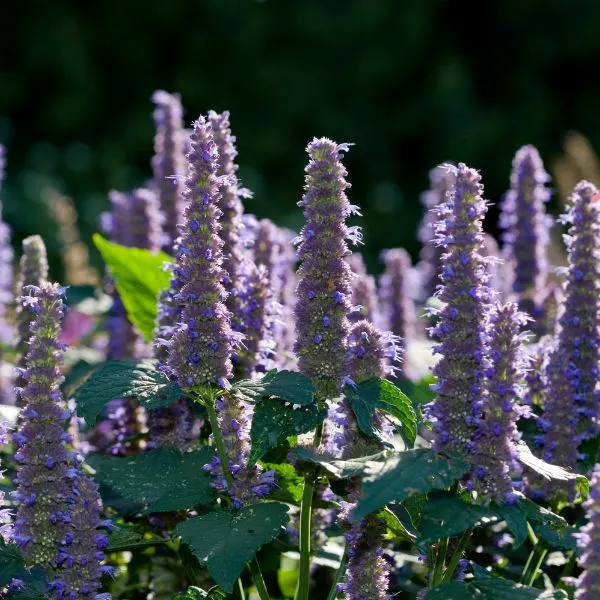
Benefits: Hyssop repels the white cabbage butterfly.
In addition to traditional edible herbs, many gardeners enjoy having medicinal herbs as well. Hyssop is a fragrant ancient herb useful for skin preparations as well as an ingredient in soup, meats, and teas.
This fragrant herb is an excellent companion to turnips and will repel the white cabbage butterfly that can damage brassica plants very quickly.
13. Lavender
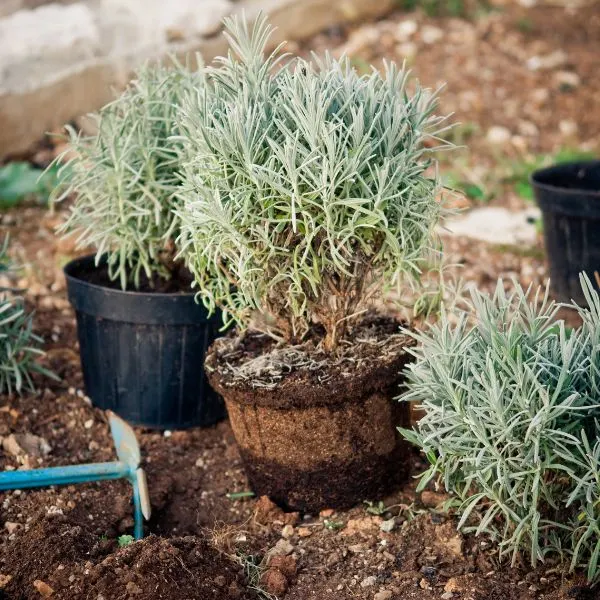
Benefits: Lavender repels deer and insect pests.
If you are growing turnips as a crop, you will want to consider using lavender especially if you are trying to deter deer as well. Deer love turnip tops as well as the turnips themselves. But, the strong smell of lavender is offensive to deer and will keep them away. So planting lavender may save your crop.
In addition, lavender pairs well with garlic and onions which are also excellent companions for turnips. Used together, they will keep turnips healthy and free of major insect damage.
14. Marigolds
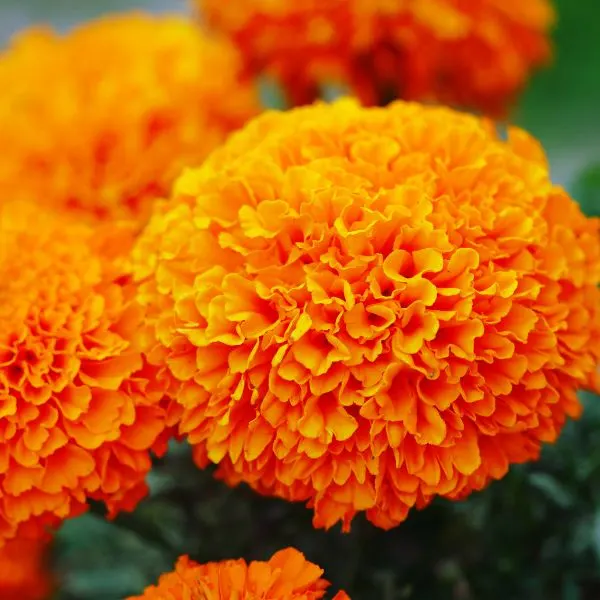
Benefits: Marigolds repel whiteflies, nematodes, and other pests.
Marigolds in the vegetable garden are beautiful and practical. They attract a variety of pollinators which will improve turnip productivity. In addition, marigolds repel a variety of pests that damage turnips and other brassicas.
In addition, marigolds have antifungal properties that can prevent an overgrowth of fungus in the garden. When marigolds die, they can be mulched into the soil to repel destructive worms.
15. Mint
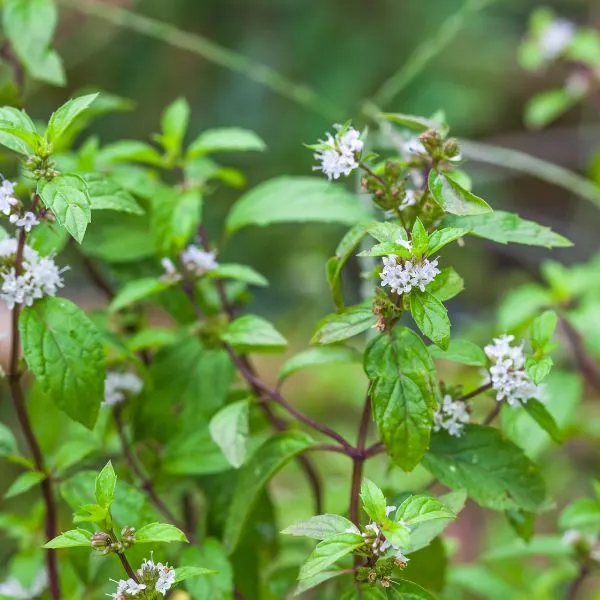
Benefits: Mint repels both insects and mammals.
If deer or other animals are causing a problem with your turnips, mint might be a great solution. It multiplies very quickly which makes it ideal for planting in a large area. It can easily become invasive, so you may want to keep it in pots or plant it in a way that will not take over your garden!
Catmint is a particularly good variety of mint that will benefit your turnips.
16. Nasturtiums
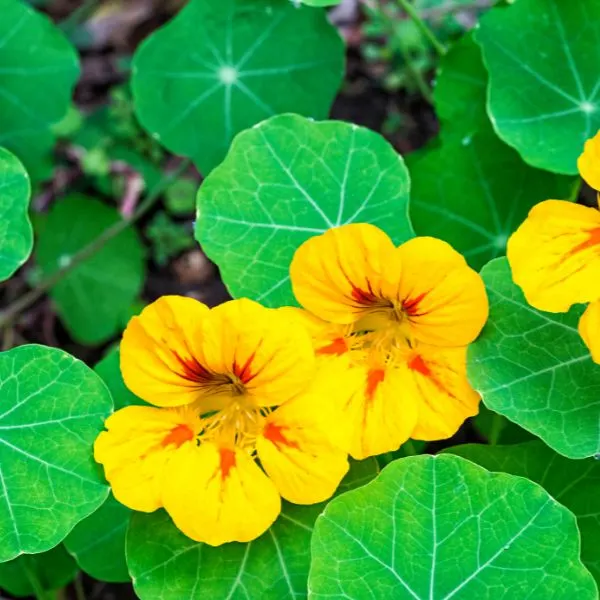
Benefits: Nasturtiums act as a trap crop for aphids.
Nasturtiums add beautiful color to the garden and make great companions for turnips as a trap crop for aphids.
They are also a practical addition to the garden as the flowers make great additions to the table. You can use nasturtiums to make salads, quiches, rolls, hot sauce, and even jelly.
17. Peas
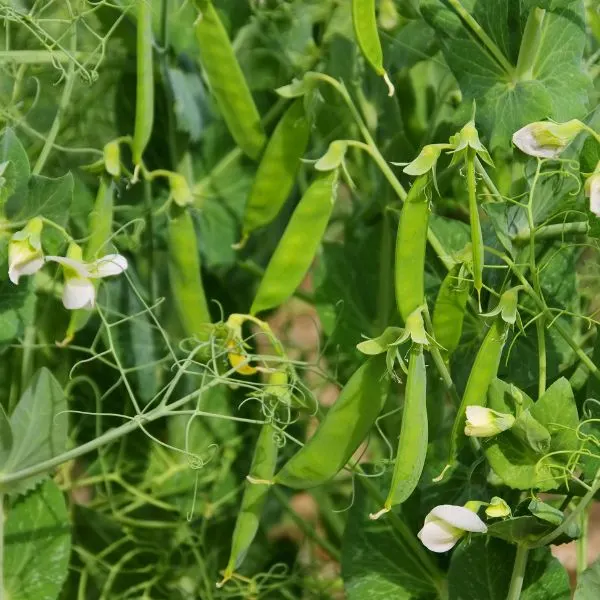
Benefits: Peas are nitrogen-fixing and will improve turnip growth.
As you plant your peas along the trellis, consider planting turnips at the base. Both peas and turnips like cool weather so they share a similar growing season.
Both can be planted in the fall and in the spring. Turnips require large amounts of nitrogen and peas will provide this natural fertilizer when planted nearby.
18. Radishes
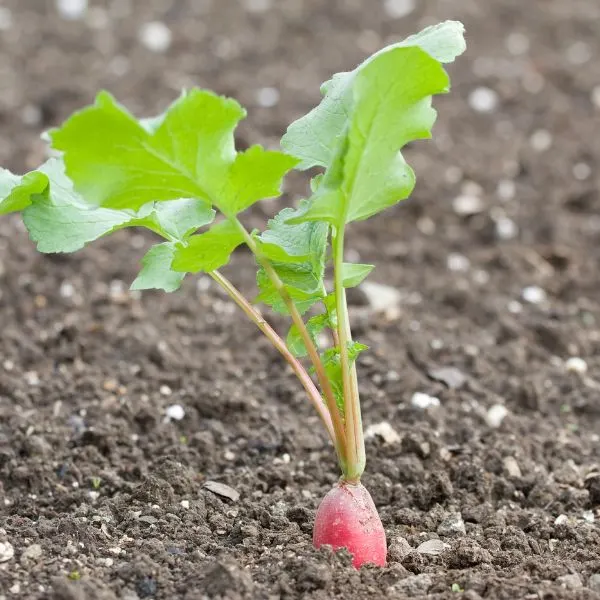
Benefits: Radishes deter damaging insects.
In general, it is not recommended to plant root crops with turnips. Radishes may be the only exception. Radishes will protect your turnips against many insects, specifically squash, bugs and aphids.
A good planting strategy is to grow a row of radishes right up alongside the turnips in your garden to provide an additional defense against these damaging insects.
19. Raspberries
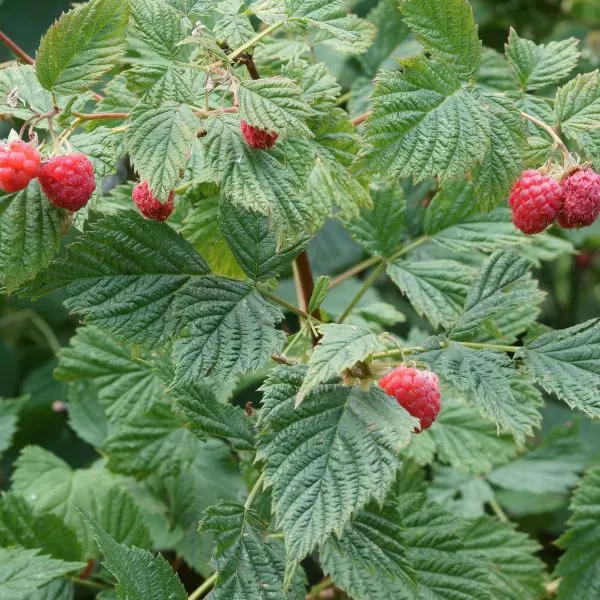
Benefits: Turnips act as a trap crop for Harlequin beetles.
In some areas, Harlequin beetles can be very damaging insects. If you have raspberries in your garden and they are being damaged by these insidious bugs, consider planting turnips nearby. Turnips are even tastier to these Harlequin beetles than raspberries.
In fact, they love all plants in the brassica family. If you plant turnips nearby, the Harlequin beetles will feast on the turnips instead of the raspberries. However, if you use this method, it is important that you properly manage the turnips in order to prevent the beetles from overwintering.
The best way to manage the infested turnips is to cover them with straw and burn them. Do not simply leave them to rot or they will perpetuate a bigger problem.
20. Rosemary
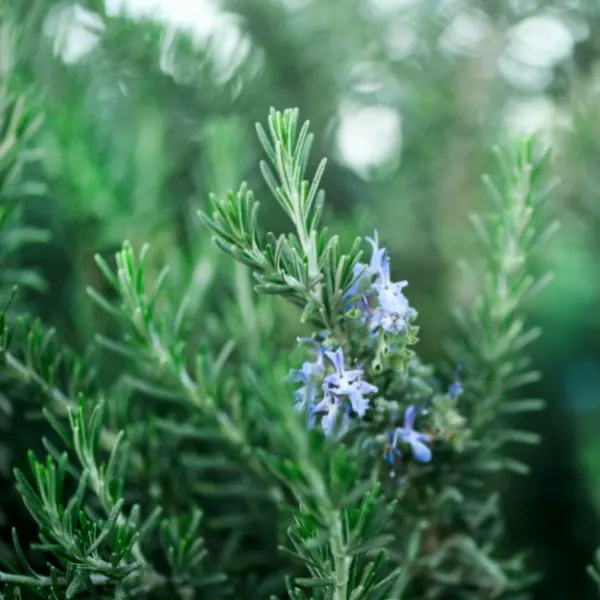
Benefit: Rosemary repels aphids, flea beetles, and white cabbage butterflies.
Any gardener who also enjoys cooking a variety of dishes will enjoy rosemary fresh from the garden. It is friendly to turnips because it repels common insects that damage turnips.
Of course you should not use this in your garden if you are using turnips as a trap crop and not as a food crop. Rosemary has a strong smell and will repel insects like flea beetles, aphids, and white cabbage butterflies which are common pests of plants in the brassica family.
21. Sage
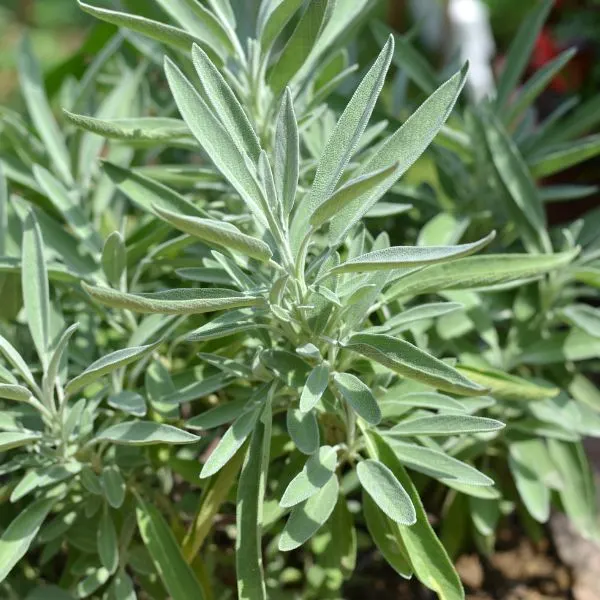
Benefits: Sage repels white cabbage butterflies, flea beetles, and aphids.
If you want to grow turnips as a food crop, it’s quite possible that you should plant them right in the middle of your herb garden. The reason is that sage along with many other strong-smelling herbs repels some of the most common pests for turnips.
Of course, sage is very useful for other reasons as well. It’s a perennial which is very convenient and is used to season many savory dishes. Its flowers attract bees which pollinate other plants in the garden. When sage is added to the compost pile it will increase the speed of decomposition.
22. Sweet Alyssum
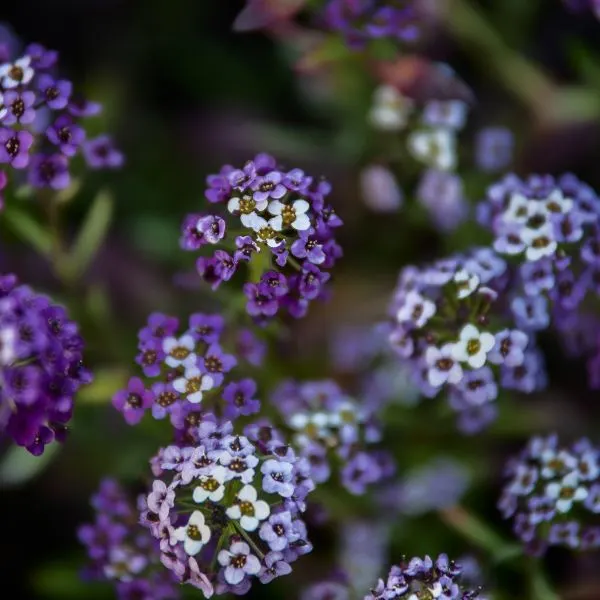
Benefits: Sweet alyssum will attract beneficial predators to the garden.
If you are anything like me, you may have thought that alyssum was only good as an addition to your flower pots.
This low-growing plant has tiny white flowers They will attract all kinds of beneficial insects and pollinators. Alyssum will attract things like lacewings, ladybugs, parasitic, wasps, and hoverflies which all help manage pests that commonly eat turnips.
23. Swiss Chard

Benefits: Turnips act as a trap crop.
Swiss chard can benefit by being planted near turnips. They are both in the brassica family and turnips act as a trap crop for insects that will typically eat Swiss chard. When turnips are planted near Swiss Chard, they will become the target of most of the damaging insects in that area. Of course, other companion plants should still be planted near the Swiss chard to repel the damaging insects as well.
24. Tarragon
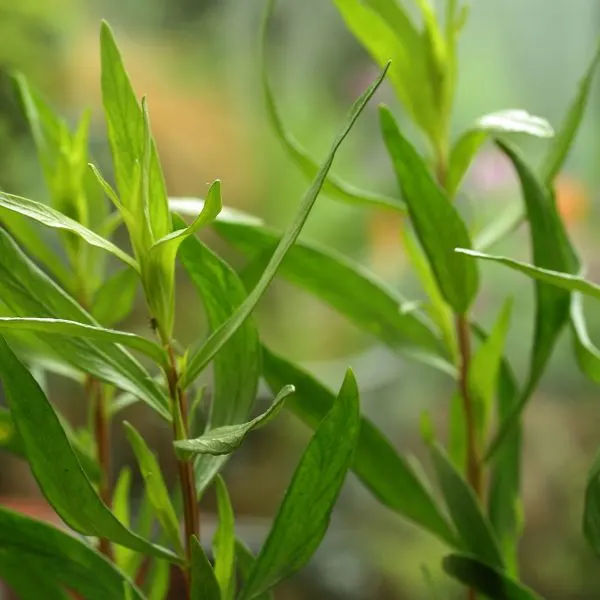
Benefits: Tarragon repels pests and improves the health of other companion plants
Like many other herbs, tarragon has significant pest-repelling benefits. Interestingly, it is also known as a nursing plant. That means it improves the health of other plants nearby, specifically other herbs.
It will repel damaging insects, but it will also improve the health of other companion plants. Tarragon is a perennial and most gardeners suggest planting it with other perennials for convenience and because they prefer similar watering and soil conditions.
25. Thyme

Benefits: Thyme repels damaging insects and attracts beneficial predator insects.
If you are adding herbs to your turnip garden, you will definitely want to add some thyme. It is a gem of the herb garden because it repels can aphids and white cabbage butterflies which are all insects that eat turnips.
In addition, its delicate flowers attract many beneficial insects like parasitic, wasps, lacewings, and ladybugs which will help combat the pests even further. It’s a great combination that builds on its practical culinary uses for meats and soups.
26. Vetch (Vicia sativa)

Benefits: Vetch is nitrogen fixing.
Another plant in the legume family to benefit turnips is vetch, or hairy vetch. Like peas and beans, it will increase the nitrogen in the soil and will increase turnip productivity.
Vetch protects against aphids and prevents soil erosion as well. It can act as a natural mulch as well.
Bad Companion plants for Turnips
When considering what not to plant near turnips, it is important to focus on roots and pests. As a root crop, turnips require plenty of space for root growth.
As such, they do not do well planted with other root crops which also require a lot of space for growing roots.
In addition, as a member of the brassica family, turnips are prone to many pests. Other plants that attract those same pests would make poor companion plants.
Here are plants that are not compatible with turnips.
1. Beets
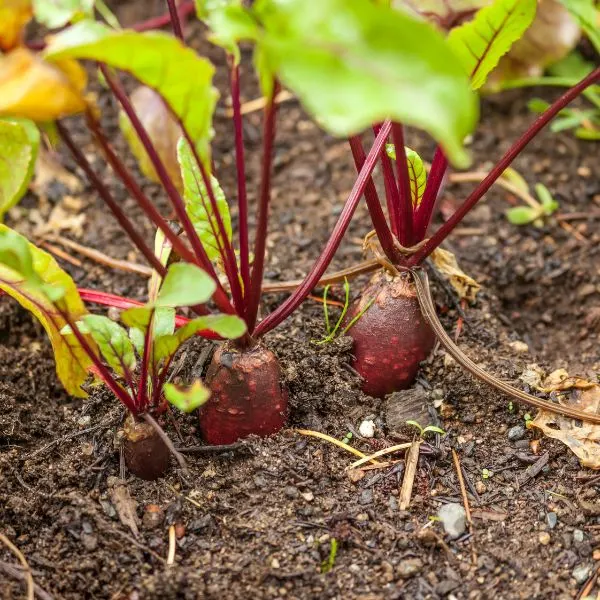
Beets should not be planted with turnips. They are a root crop that will compete for space and nutrients.
2. Horseradish

As a root crop, horseradishes compete with turnips for root space and cause overcrowded growing conditions. Planting them together will inhibit the growth of both plants.
In addition, turnips, which are prone to many pests, many transfer those pests to horseradishes. Neither plant offers protective benefits to the other so they should not be planted together.
3. Onions
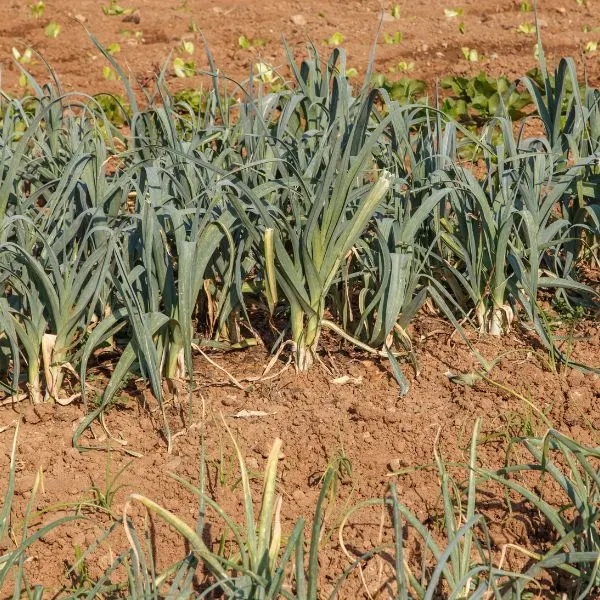
While alliums in general are beneficial to turnips as pest repellants, onions are not. As a root crop that requires a lot of growing room, they compete for space with turnips. There are other alliums like garlic and chives which are friendly to turnips.
4. Potatoes

Much like other root crops, potatoes require a lot of space for roots. Most of its growth is underground. In addition, they require a lot of nutrients. Both of these factors make them poor companions for turnips. Planting them together would mean that neither thrives.
5. Carrots

Like other plants on this list, carrots do not make great companions to turnips. As a root crop, they compete for space and nutrients with turnips. Flies that commonly land on carrot tops will be attracted to the turnips. Since neither crop is protecting the other, this will only increase plant damage.
Ideal Growing Conditions for Turnips
In addition to providing companion plants for turnips, it is important to choose a site with the right growing conditions. Here are some important factors to consider.
- Soil: Turnips need moist, well-drained, fertile soil with a slightly acidic PH.
- Season: Turnips can be planted several times during the year provided the temperatures are warm enough. It is most common to plant in the spring and summer for a summer and fall crop.
- Temperature: Turnips prefer soil to be 40-75 degrees Fahrenheit.
- Sun: Turnips need full sun.
FAQ About Turnip Companion Plants
What grows well with turnips?
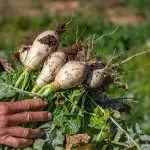
Good plants to grow alongside turnips include broccoli, potatoes, bush beans, hyssops and several more. This list of 26 Companion Plants for Turnips covers them all in detail.
What should you not plant next to turnips?

Turnips should not be planted with most root vegetables like onions, beets, horseradish, potatoes, and carrots.
What to plant after turnips?

If you are using crop rotation, potatoes should be planted after turnips and other brassicas.
What is the best way to grow turnips?

Turnips like to be planted in loose, well-drained soil with plenty of fertilizer. They like full sun and can be planted in the spring, summer, and fall in some locales.
When can I dig up turnips?
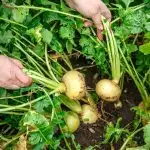
Turnips can be harvested when they are about 2” in diameter if you are eating them raw. If you are cooking them, they can be harvested when they are around 3” or apple. Turnips are usually harvested from May to September and should be harvested before they bolt to prevent them from being woody in texture.
Can you plant peppers and turnips together?

Peppers have different requirements then turnips do, so unless you are managing a controlled environment for each plant they won’t pair together. Peppers prefer warm soil while turnips prefer a cooler environment.
What to plant with turnips for deer?

If you’re looking to plant a food plot for deer that includes turnips, some good companion plants to consider include: clover, radishes, oats, wheat, barley, and rye.
What do turnips add to the soil?

Turnips can add several beneficial nutrients to the soil, including nitrogen, potassium, and organic matter.
Choose Turnip Companion Plants & Your Garden Will Thrive
Turnips are one of those unsung garden gems that are often ignored. After all, turnips are not a staple in every culture so many gardeners are unaware of their benefits or how to plant them. Amazingly, they are relatively easy to grow and offer benefits that will improve the productivity of more common garden crops.
When planted with intention, turnips may become a gardener’s best friend. Protect the ones you want to eat but not the ones you want to use as a trap crop and you will have a great strategy against many common insects in the garden.
More companion plant stuff
